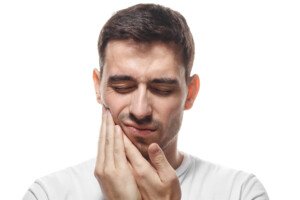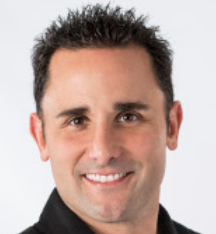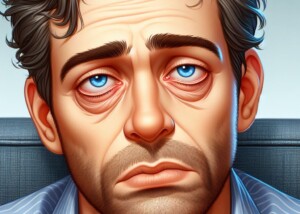
Before you panic that your night sweats are caused by lymphoma or HIV, there’s a possibility they’re caused by TMJ disorder.
Night sweats can be bad enough to require changing one’s clothes.
“Patients with TMJ disorders frequently have a destructive bite with worn down teeth that forces their lower jaw backwards,” begins Jeffrey Haddad, DDS, of Doolin Haddad Advanced Dentistry in Rochester, MI.
“This backwards positioning can cause narrowing of a person’s airway while they sleep, which leads to obstructive sleep apnea.
“Conversely, a person with an obstructed airway may clench and grind their teeth, which can wear down the teeth and deteriorate the bite, leading to TMD symptoms and pain.”
“We have seen a significant increase in the number of patients we treat for combined obstructive sleep apnea/TMD since our practice began monitoring and treating sleep apnea in our practice.
“In fact, it is now protocol to have every one of our TMJ patients utilize our sleep monitor to determine if a sleep breathing disorder is present.
“Night sweats are a very common symptom of a sleep breathing disorder. Therefore if a patient is experiencing this, it could be a result of a combined TMJ/sleep breathing disorder.”
Night Sweats and Sleep Apnea Link
“Night sweats are associated with several sleep symptoms,” says a paper in the Annals of Family Medicine (Sept. 2006).
“Both night sweats and sleep disturbances are commonly experienced by adult primary care patients,” continues the paper.
“When their patients report night sweats, clinicians should consider asking about sleep quality and sleep-related symptoms.”
A report in the British Medical Journal Open states: “The prevalence of frequent nocturnal sweating was threefold higher in untreated OSA [obstructive sleep apnea] patients than in the general population and decreased to general population levels with successful PAP therapy. Practitioners should consider the possibility of OSA in patients who complain of nocturnal sweating.”
TMJ, Night Sweats, Sleep Problems
“Recent data indicates an estimated 75% of people with TMD also have sleep breathing disorders, and 52% of people with sleep disorders have TMD problems or are prone to them in their lifetime,” says Dr. Haddad.
“These are essentially the same patients with poor jaw posture, resulting in either pain and discomfort and/or a compromised airway.
“We have refined our treatment approaches and the design of our oral therapy appliances as more and more research connect TMJ and sleep disorders.”









































